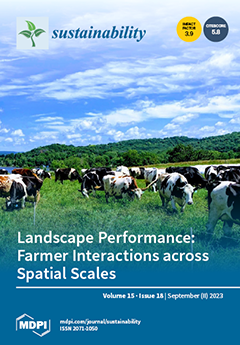Our study analyzed PM
2.5 concentrations in Porto Velho, Rondônia, during the April 2020 and October 2022 wildfire seasons. This study aimed to evaluate the temporal characteristics of PM
2.5 and the influence of long-distance pollution sources. Using PurpleAir data, we found that
[...] Read more.
Our study analyzed PM
2.5 concentrations in Porto Velho, Rondônia, during the April 2020 and October 2022 wildfire seasons. This study aimed to evaluate the temporal characteristics of PM
2.5 and the influence of long-distance pollution sources. Using PurpleAir data, we found that the average PM
2.5 concentration was 17.7 ± 24.0 µg m
−3, with significant spikes in August. PM
2.5 concentrations decreased during the day but rose from nighttime to morning. The PM
2.5 concentration was observed to be distributed at a high level of 36.3 ± 31.1 µg m
−3 in slow westerly winds. Moreover, even in the dominant northerly wind conditions, a similarly high concentration of PM
2.5 was detected, measuring at 33.2 ± 28.3 µg m
−3. Air masses mainly originated from northeastern, southeastern, and southern regions, passing through Paraguay and Bolivia. Furthermore, PM
2.5 in Porto Velho was influenced by Brazil’s northern and Central-West areas. To meet the Sustainable Development Goal (SDG) Indicator 11.6.2 for clean air, it is recommended that wildfires in Porto Velho’s northern and western regions be reduced, and more robust deforestation policies are needed in areas with long-distance pollution sources.
Full article





